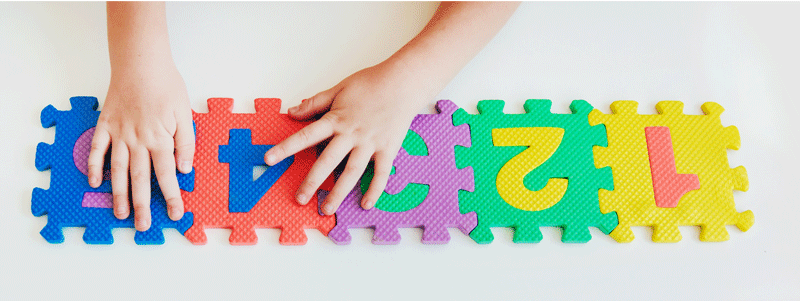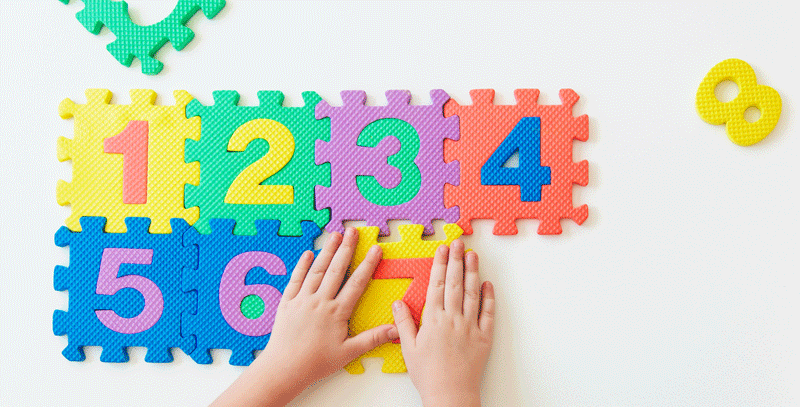Understanding Ordering of Numbers and Applying the Rules of Ascending & Descending Order Value
One of the most important topics for early Math learners is to identify the order of numbers and correctly arrange them from small to big and big to small. Ordering is basically arranging numbers in a sequence where the successive number either gets larger or smaller, depending upon the equation.
Ascending Order
When a set of numbers are arranged from smallest to largest, those numbers are said to be in ascending order.
Explain to children that ascending means ‘moving up’. When you climb a mountain or stairs, you move in upward direction, this is termed as an ascend. Thus, ascending order is denoted by an upward arrow sign.
Descending Order
When numbers are arranged from largest to smallest, it is said to be in descending order.
When you move from top to bottom or when you walk down the mountain, you are essentially descending. Thus, descending order is denoted by a downward arrow sign.

Examples of Equations for Ascending Order
#1 Arrange the numbers in ascending order – when the numbers follow a particular sequence.
3, 4, 2, 1, 5
Answer: 1, 2, 3, 4, 5,
#2 Arrange numbers in ascending order where the starting digit is not 1.
7,9,10,8
Answer: 7, 8, 9,10
#3 Arrange the following random numbers in ascending order from 7 to 13 – when the numbers do not follow a continuous sequence. Numbers that are not next to each other on a number line.
10, 13, 9, 7
Answer: 7, 9, 10, 13
#4 Arrange the following 5 times table in ascending order.
15, 10, 30, 45
Answer: 10, 15, 30, 45
Examples of Equations for Descending Order
#1 Arrange the numbers in descending order – when the numbers follow a particular sequence.
2, 3, 5, 4, 1
Answer: 1, 2, 3, 4, 5
#2 Arrange numbers in descending order where the starting digit is not 1.
3, 2, 5, 4
Answer: 2, 3, 4, 5
#3 Arrange the following random numbers in descending order from 25 to 10 – when the numbers do not follow a continuous sequence. Numbers that are not next to each other on a number line.
23, 17, 10, 25
Answer: 25, 23, 17, 10
#4 Arrange the following 8 times table in descending order.
16, 32, 64, 40
Answer: 64, 40, 32, 16
Pre-learning strategies before Introducing the Concept of Ascending & Descending
Directly exposing children to Mathematical terms such as ‘ascending’ and ‘descending’ can get a little intimidating. So, to warm them up and informally share the idea with your kids, here are some activities you can practice;
- Keep 4 to 5 balls of different sizes and ask your child to arrange them in order i.e.; from smallest to largest and then largest to smallest.
- Take 4 to 5 bottles of different heights and then encourage the learner to place the bottles in height-wise order starting with the shortest and proceeding to the tallest, and vice versa.
- Introduce objects of different weights. Then let your child pick up the object and estimate which one is the heaviest and which is lighter, and the lightest.
- Assign each child with a number from 1 to 5 or 15 to 20, and let them figure how to stand orderly in a row from lowest to the highest number and highest to lowest.
- Play a relay race, where children have to pass on the baton to the person wearing the jersey of the next number. Example, number 1 jersey passes on the baton to the participant with number 2 jersey.
Mathseeds is an excellent Math based platform available in the UAE, across Dubai and other Middle East countries. Mathseeds targets children between ages 3 years to 9 years and contributes in establishing a sound fundamental base for kids to learn important math concepts. The lessons are structured systematically and the level of difficulty advances gradually, depending on the learning capabilities of the school goers.
If you stay in GCC or other Middle Eastern country, and wish to introduce ascending and descending order concepts to your learners in a fun and simplistic manner, you can subscribe to the Mathseeds app, by learning more about it here: https://knowledge-hub.com/mathseeds/






Recent Comments